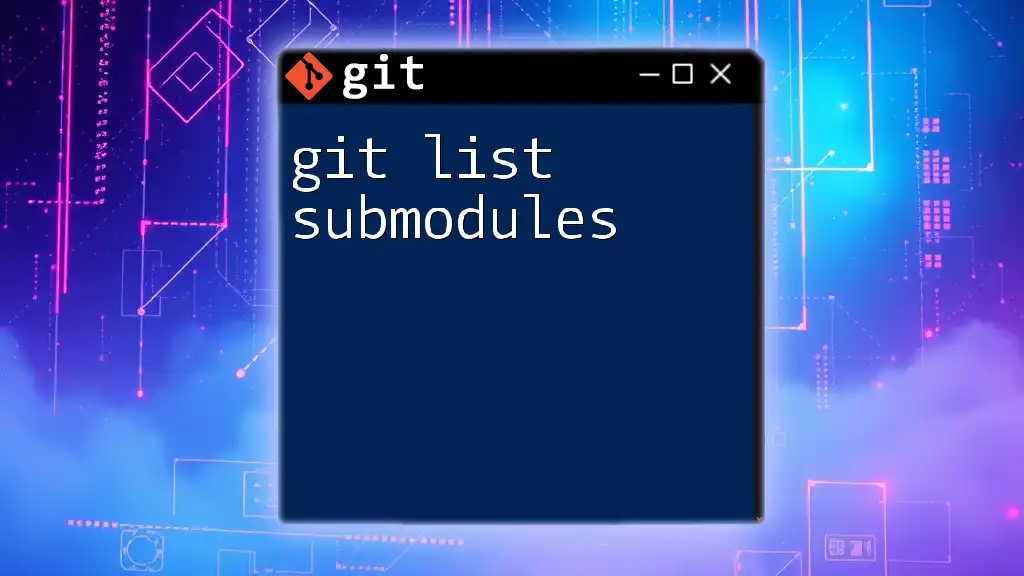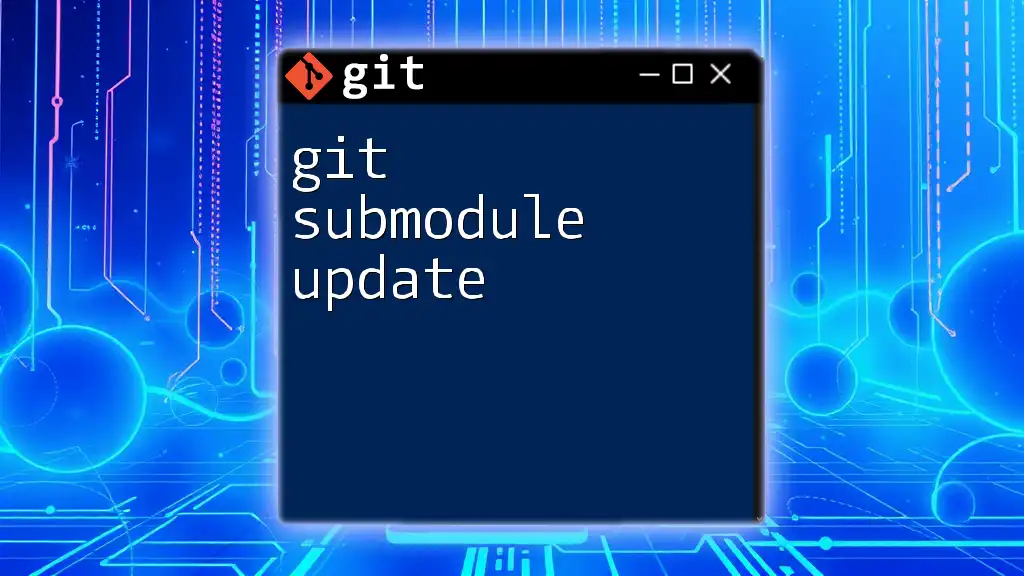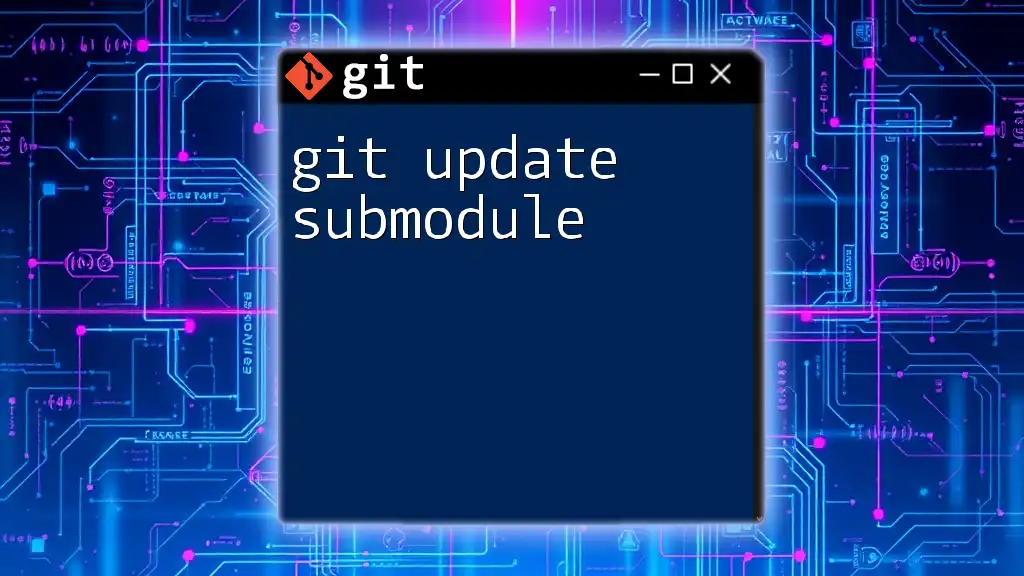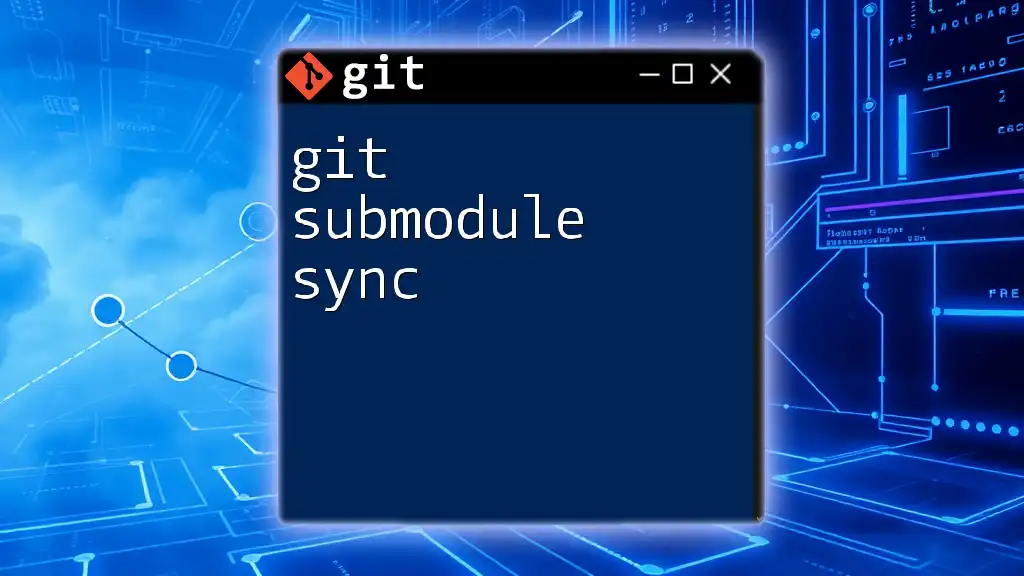A Git submodule is a repository embedded within another Git repository, allowing you to keep a Git repository as a subdirectory of another Git repository, enabling better management of dependencies and shared libraries.
Here’s how to add a submodule:
git submodule add https://github.com/username/repo.git path/to/submodule
What is a Git Submodule?
What is a Submodule?
A submodule is essentially a Git repository nested inside another Git repository. This allows you to incorporate and manage dependencies from other repositories without completely merging their histories into your main project. In software development, submodules can be critical for managing libraries, plugins, or any external resources required for your application.
Utilizing submodules offers significant benefits, such as:
- Keeping your project modular and maintainable
- Easily integrating third-party libraries or services
- Avoiding duplication of code across multiple projects
How Submodules Work
Submodules function by pointing to a specific commit in an external repository. When you add a submodule to your project, Git does not copy the contents of the submodule's repository directly. Instead, it records the URL of the submodule and the specific commit from that repository you want to reference.
To visualize this within Git's tree structure:
- The parent repository maintains a pointer to the submodule
- Each submodule has its own independent history, which lies outside the main repository's history
In essence, when you make changes to a submodule, those changes can be committed within the submodule itself and later reflected back in the main repository.

Creating a Git Submodule
Initializing a Submodule
To add a submodule, you use the command:
git submodule add <repository-url> [path]
For example, if you want to add a library hosted on GitHub:
git submodule add https://github.com/user/library.git libs/library
This command does two primary things: it adds the submodule's repository at the specified path, and it creates a `.gitmodules` file that records details about the added submodule, including its URL and local path.
Inside the `.gitmodules` file, you will see the following format:
[submodule "libs/library"]
path = libs/library
url = https://github.com/user/library.git
This ensures that anyone cloning your repository can also access the necessary submodule.
Cloning a Repository with Submodules
If you want to clone a repository that contains submodules, it's essential to use the `--recurse-submodules` option. This option ensures that Git initializes and updates the submodules alongside the main repository, so you don't have to manage them separately after cloning.
Here’s how you can do this:
git clone --recurse-submodules <repository-url>
If you forget to use this option, you must manually initialize and update the submodules later. You can do this using:
git submodule init
git submodule update

Managing Git Submodules
Updating Submodules
Regular maintenance of your submodules is crucial, especially if they are frequently updated. To keep your submodules aligned with the latest commits from their respective upstream repositories, use:
git submodule update --remote
This command fetches the latest changes from the submodule’s repository and updates the submodule to the latest commit. This step allows you to work with the latest features and fixes offered by the submodules.
Deleting a Submodule
At times, you may need to remove a submodule completely. To do so, follow these steps to ensure a clean removal:
-
Deinitialize the submodule: This step removes the entry in the local `.git/config` and prevents the repository from tracking its changes.
git submodule deinit <path> -
Remove the submodule from the main repository: You will need to run the following command:
git rm <path> -
Clean up the `.gitmodules` file: Open the `.gitmodules` file and remove the corresponding entry for your submodule to avoid any confusion in the future.
-
Commit the changes: Finally, remember to commit your changes to reflect the removal in your repository.
Note: If the submodule was initialized previously, you must also remove any cached references to it in Git’s internals to prevent Git from tracking it.

Best Practices for Using Git Submodules
When to Use Submodules
While submodules can be very helpful, it's essential to carefully consider their usage. Some advantages include:
- Ease of maintaining external libraries without direct inclusion
- Independent version control of dependencies
However, they come with challenges, such as confusion for new team members, additional complexity in workflows, and maintenance overhead. In scenarios where you need to frequently update dependencies, it might be worth exploring Git subtrees as an alternative.
Keeping Submodules Up to Date
To ensure that your project remains aligned with its dependencies, regularly update your submodules. Encourage a routine:
- Check for updates regularly
- Use automation tools or scripts to streamline updates
Final Thoughts
Implementing Git submodules in your workflow can significantly enhance your project’s organization and functionality. While they may add complexity, understanding how to effectively use them will save you headaches down the line.
Links to Additional Resources: Explore official documentation and community tutorials to broaden your knowledge and master Git submodules effectively. With this guide, you now have a solid foundation to answer what a Git submodule is and how to leverage its capabilities in your coding practices.

















